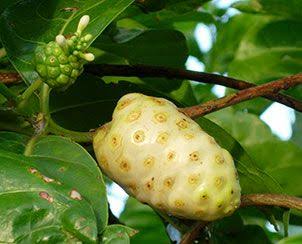NONI - Origins and History
Morinda citrifolia is a fruit-bearing tree in the coffee family, Rubiaceae. Its native range extends across Southeast Asia and Australasia, and was spread across the Pacific by Polynesian sailors.[1] The species is now cultivated throughout the tropics and widely naturalized.[2] Among some 100 names for the fruit across different regions are the more common English names of great morinda, Indian mulberry, noni, beach mulberry, and cheese fruit.[3] The fresh fruit's strong, vomit-like odor has made it a famine food in most regions, but it remains a staple food among some cultures, and has been used in traditional medicine. In the consumer market, it has been introduced as a supplement in various formats, such as capsules, skin products, and juices.
A variety of beverages (juice drinks), powders (from dried ripe or unripe fruits), cosmetic products (lotions, soaps), oil (from seeds), leaf powders (for encapsulation or pills) have been introduced into the consumer market.
The Green fruit, leaves, and root or rhizomes might have been used in Polynesian cultures as a general tonic.
The fruit contains potent antioxidants that may provide some health benefits for the body, such as supporting a healthy immune system and relieving inflammation.




